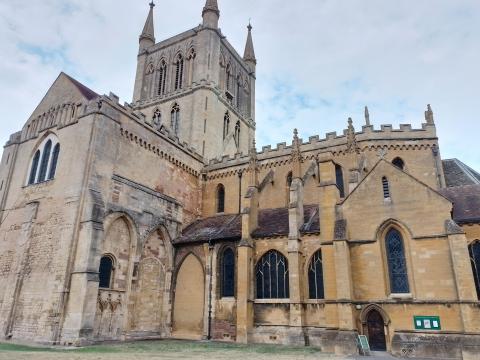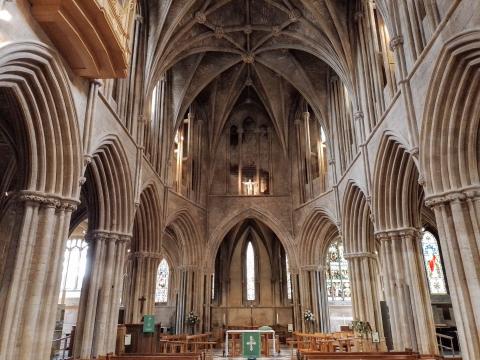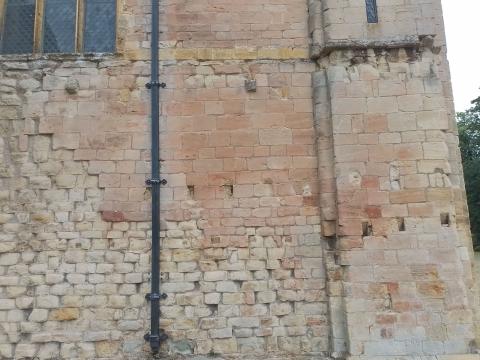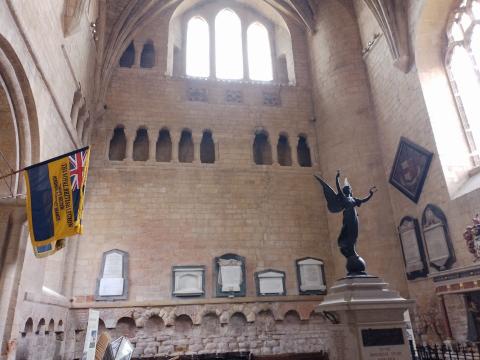Pershore Abbey

I stopped off at Pershore yesterday, in pursuit of its abbey. Had I known there was such a long hike between the train station and the town centre, I might have thought twice, or at least booked a hotel half way between the two. Although the centre seems relatively uninteresting (to which I offer my apologies to any readers who are positively offended) the abbey was worth the trek. Rather truncated on account of Henry Tudor’s commissioners who allowed certain abbeys and priories to become parish churches (but only after the unnecessary portions were sold off), it is still an impressive feature on the skyline. Its tower appears too tall for its shrunken base, but its north transept collapsed in the seventeenth century, only adding to its sense of disproportion.

It was from Pershore Abbey that one Brother Richard Beerly presented evidence to Thomas Cromwell about the dire state of English monastic life. In 1536, he testified that:
"Monckes drynk an bowll after collacyon tell ten or xii of the clock, and cum to mattens as dronck as myss, and sume at cardes, sume at dyss."
He is effectively accusing his colleagues of boozing after supper till between 10pm and midnight, and then attending matins (early morning prayers) inebriated. I have never seen a drunk mouse, but I understand his point. Furthermore, others are keen gamblers with cards and dice. This is not quite the lifestyle one might expect of men dedicating their lives to piety and service. On the other hand, much as I admire Tom Cromwell, he was not beyond bending the law to achieve his royal master's goals. Beerly’s testimony came at a most opportune time for the government, and charges of immorality or even laxity would help justify the state’s seizure of monastic property. Although redundant monks and nuns were pensioned off, I can well imagine that the good Brother got a little more by way of recompsense. On the other hand, he might have been telling the truth; had he wanted to exaggerate, he might have supplied examples which both justified and activated the provisions of the 1533 Acte for the Punishment of the vice of Buggerie, which hinted at even darker monastic goings on in England's religious houses.
Whether Pershore was the den of vice which Tudor ministers found convenient to believe, or whether it was simply owning more land than greedy, jealous officials could suffer, we shall not know this side of heaven.

Curiously, some of the outer walls are coloured pink, which one might otherwise find rather charming. Sources within the church suggest this is the result of fire, however, in either 1002 or 1223. Sadly, religious institutions can harbour iniquitous men and women who employ piety as a cloak; God surely knows which. And like Pershore’s pink reminder of fiery purge, so the Lord will deal with all who abuse His people, distort His word or neglect His service. Wrote the apostle:
Each one’s work will become clear; for the Day will declare it, because it will be revealed by fire; and the fire will test each one’s work, of what sort it is. 1 Corinthians 3:13

- Log in to post comments


 Sunday Worship 10.45am & 6.00pm
Sunday Worship 10.45am & 6.00pm